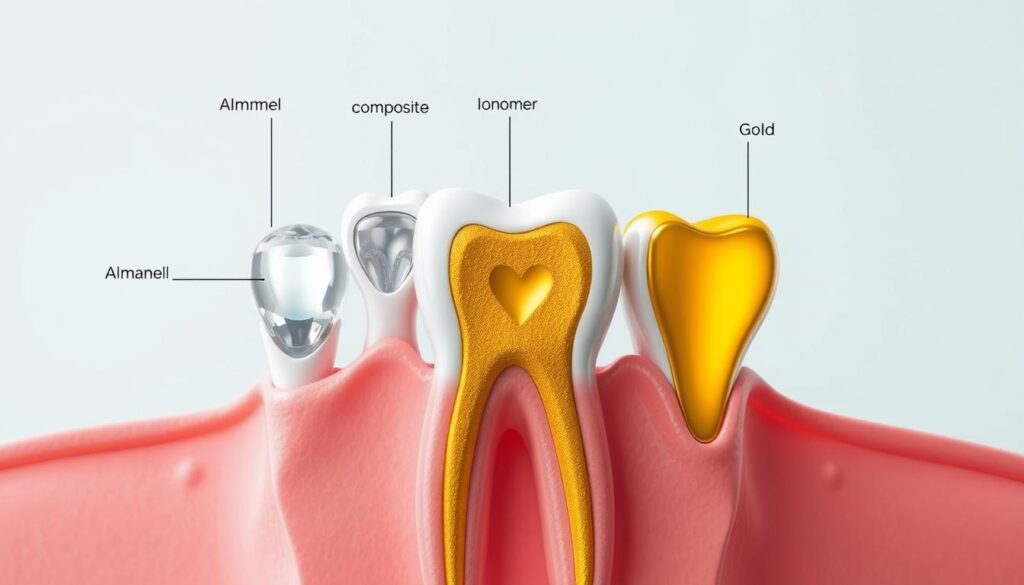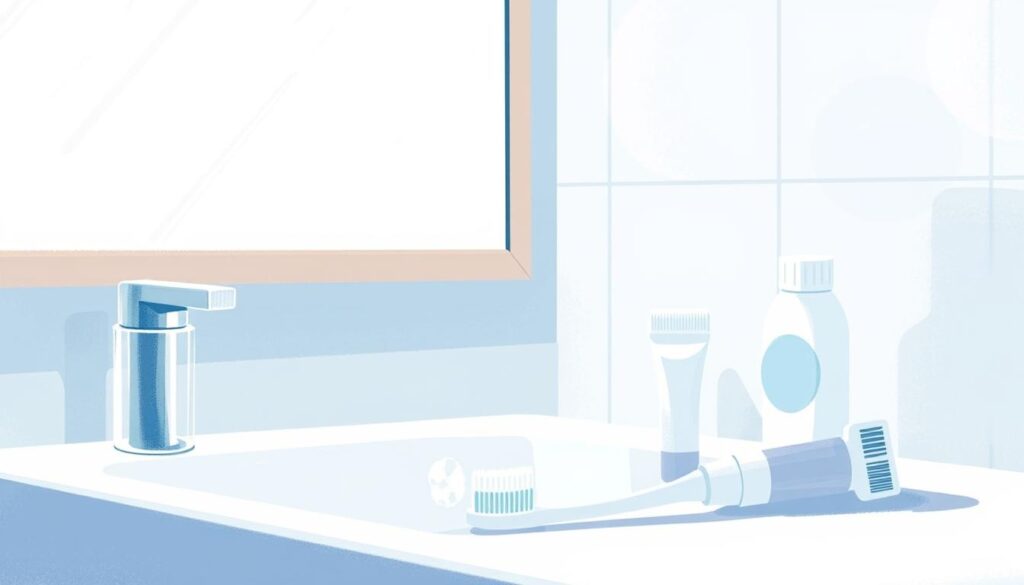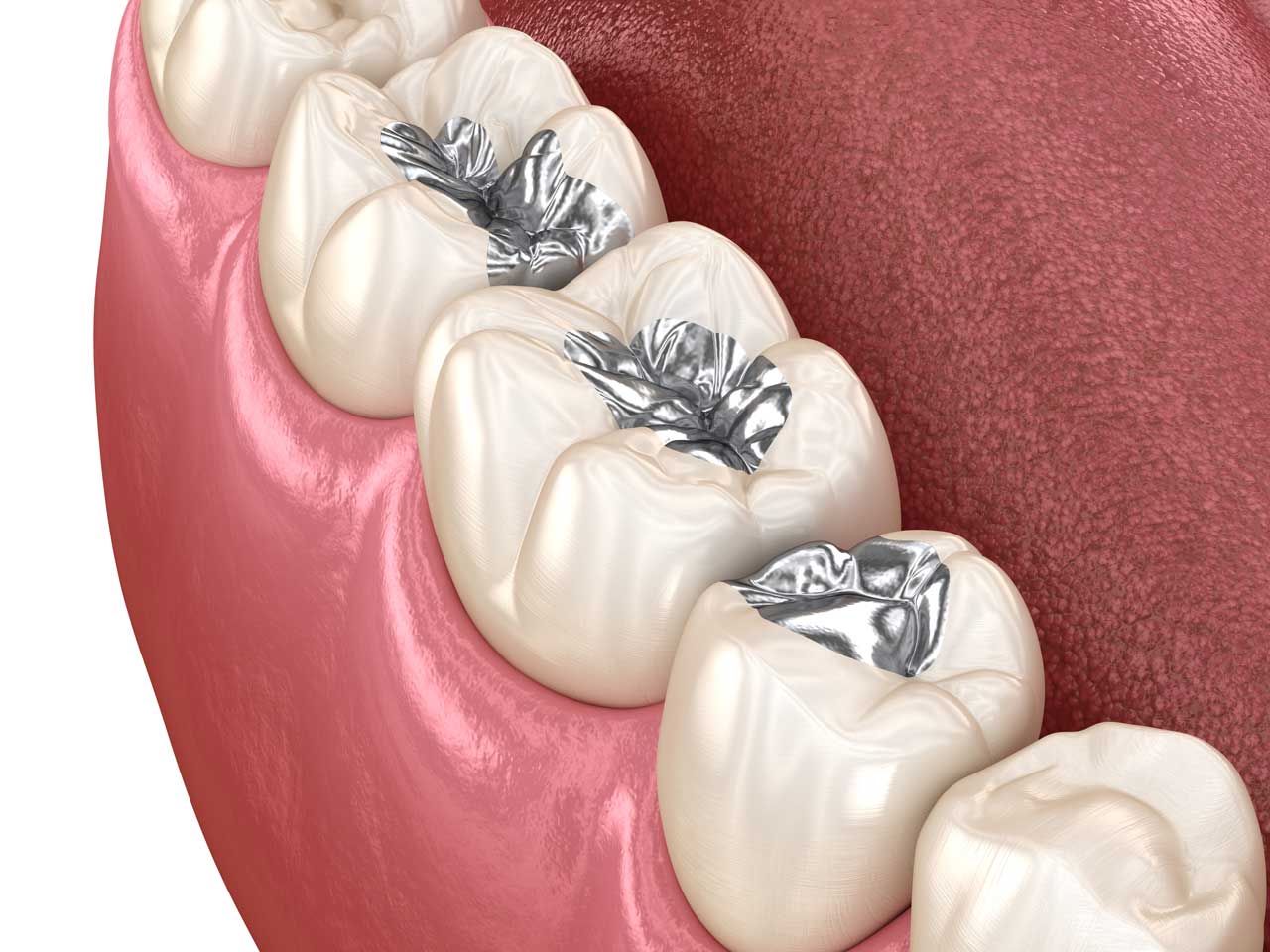Cavities are a common dental problem, making it crucial to treat them quickly. Fillings are a common solution in dentistry to fix teeth damaged by decay. They help keep teeth strong and working right.
Fixing cavities early stops them from getting worse. This avoids the need for more serious treatments. We will explore why acting fast is important and how to prevent cavities.
Key Takeaways
- Cavities necessitate prompt cavity treatment to protect dental health.
- Fillings are a common method used in restorative dentistry.
- Timely intervention can prevent more invasive dental procedures.
- Understanding the causes of cavities aids in effective cavity prevention.
- Regular dental check-ups are vital for recognizing early signs of decay.
Understanding Cavities and Their Impact on Dental Health
Cavities, or dental caries, are a big problem for our teeth. They happen when bad bacteria make acids that wear down the enamel. Things like bad diet, not brushing well, and not seeing the dentist often can cause cavities. Knowing about cavities helps us take better care of our teeth.
What Are Cavities?
Cavities come in different types. Pit and fissure cavities form on the chewing surfaces of molars. Smooth surface cavities appear on the sides and front of teeth. Both types are caused by the same things that lead to tooth decay. If left untreated, cavities can get worse and cause more serious problems.
Signs and Symptoms of Cavities
It's important to know the signs of cavities. Look out for:
- Tooth sensitivity, especially to hot or cold.
- Visible holes or pits in the tooth.
- Pain when chewing or applying pressure.
Spotting these signs early can help you get to the dentist before things get worse.
The Importance of Early Detection
Finding cavities early is key to keeping your teeth healthy. Regular dental visits help catch cavities before they get bad. Early treatment can stop more damage and avoid big fixes later. It also helps keep your overall health good.
| Symptoms |
Description |
Significance |
| Tooth Sensitivity |
Discomfort or pain in response to temperature changes. |
Indicates potential enamel erosion, requiring attention. |
| Visible Holes |
Physical cavities observable on tooth surfaces. |
Sign of advanced decay that necessitates immediate care. |
| Pain When Chewing |
Discomfort during biting or chewing actions. |
May indicate severe decay, potentially leading to infection. |
Cavity Treatment with Fillings
Dental fillings are a common and effective way to fix cavities. They help restore tooth function and ease pain. This section covers the different types of fillings, the filling process, and the benefits of dental fillings. It aims to help you make informed choices.
Types of Fillings Available
There are several dental filling options to meet different needs and preferences. The main types include:
- Amalgam Fillings: Made from metals, these are strong and good for back teeth.
- Composite Resin Fillings: These tooth-colored fillings match natural teeth well, making them popular for visible areas.
- Glass Ionomer Fillings: Less durable, these are often used for kids and temporary fixes. They also release fluoride to fight decay.
- Gold Fillings: Very durable and long-lasting, gold fillings are strong but more expensive and need more visits.
The Filling Procedure Explained
The filling process involves several steps:
- Local Anesthesia: A local anesthetic is used to numb the area for comfort.
- Decay Removal: The dentist removes decayed tooth material with special tools.
- Filling Material Application: The chosen filling material is applied and shaped to match the tooth.
- Curing and Polishing: For composite fillings, a curing light is used to harden the material. Then, it's polished for a smooth finish.
Benefits of Getting Fillings
Choosing dental fillings has many advantages:
- Restores Tooth Function: Fillings let you chew normally without pain or discomfort.
- Enhances Aesthetics: Composite resin and porcelain fillings make teeth look better, making them less noticeable.
- Prevents Further Decay: Fillings seal off decayed areas, protecting teeth from future cavities.
- Relief from Discomfort: Fillings can stop pain from cavities, making you more comfortable.

| Type of Filling |
Durability |
Aesthetic Appeal |
Cost |
| Amalgam |
High |
Low |
Low |
| Composite Resin |
Medium |
High |
Medium |
| Glass Ionomer |
Low |
Medium |
Medium |
| Gold |
Very High |
Medium |
High |
Post-Treatment Care and Maintenance
After getting dental fillings, it's key to take good care of them. Knowing how to maintain your fillings and following certain dietary rules can greatly improve your dental health. Here are some tips to help you care for your fillings and spot any signs of trouble.
Tips for Caring for Your Fillings
Good post-treatment care can keep your fillings in top shape. Here are some helpful tips:
- Brush your teeth twice a day and floss often.
- Use a soft-bristled toothbrush to avoid harming your fillings.
- Go to your dentist for regular check-ups and cleanings.
- Avoid eating hard or sticky foods that can damage your fillings.
Dietary Recommendations After Treatment
Sticking to certain dietary guidelines can also protect your fillings. Try to limit:
- Sugary foods and drinks, which can cause tooth decay.
- Acidic foods that might wear down the filling material.
- Hard candies or ice that can harm your fillings.
Eating fruits, veggies, and foods rich in calcium is good for your teeth and provides important nutrients.
Signs You May Need Further Treatment
Watch out for signs that your filling might be failing. These could mean you need more dental work. Look out for:
- Increased sensitivity to hot or cold.
- Visible cracks or damage to the filling.
- Discoloration or a change in how the filling looks.
Spotting these signs early can help you get to the dentist quickly. This keeps your dental health a top priority.

Conclusion
Cavity treatment with fillings is key to keeping your teeth healthy. Knowing what cavities are and how they affect your teeth shows why good oral hygiene is important. Catching signs early helps prevent bigger problems and keeps your teeth strong.
Preventing cavities is also important. Eating right and visiting the dentist regularly can help avoid fillings. Taking care of your teeth keeps them healthy and gives you a beautiful smile.
Don't forget to see your dentist regularly. These visits are crucial for keeping your teeth in top shape. Working with a trusted dentist helps fix problems fast, keeping your smile looking and feeling great.
FAQ
What are cavities, and how do they form?
Cavities, or tooth decay, are small holes in your teeth. They happen when bacteria in your mouth make acids that wear down tooth enamel. This usually happens because of bad dental care and eating too much sugar. You might feel your teeth are sensitive or see damage.
How can I prevent cavities?
To stop cavities, keep your teeth clean by brushing twice a day and flossing every day. Also, see your dentist often. Eating a balanced diet with less sugar helps a lot.
What types of fillings are available for cavity treatment?
There are many fillings for cavities, like metal, tooth-colored resin, glass ionomer, and gold. Each has its own good and bad points. Talk to your dentist to find the best one for you.
What does the cavity filling procedure involve?
First, the dentist numbs the tooth area with a local anesthetic. Then, they remove the decayed part. After that, they put in the filling material, shape it, and polish it to make your tooth look and feel normal again.
What are the benefits of getting fillings?
Fillings help your tooth work and look right again. They stop decay from getting worse and ease pain. They also protect your tooth from more harm.
What should I do after getting a cavity filling?
Take care of your teeth by brushing and flossing well. Avoid hard or sticky foods that could hurt the filling. Go to your dentist for regular check-ups. Try to eat less sugary foods and drinks.
How can I tell if my filling is failing?
If your filling is failing, you might feel more pain, see it getting darker, or notice cracks. If you see these signs, see your dentist right away for help.



